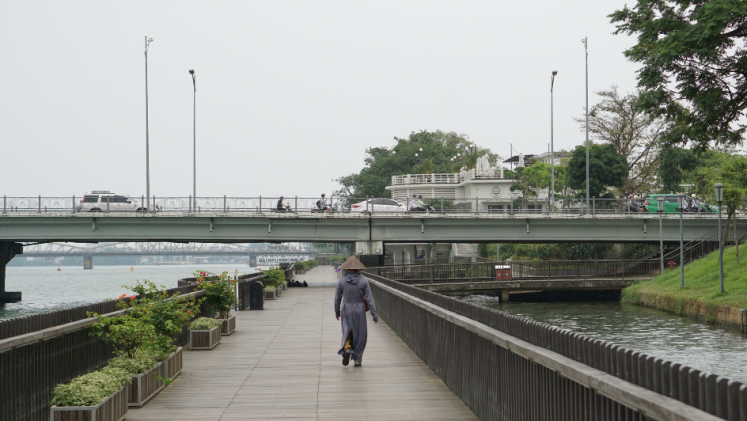Many urban regions across the globe are confronted with increasing flood risks for people, infrastructures, livelihoods and ecosystems, resulting from rapid urbanization and changes in climate, societies, and land use. Upscaled adaptation efforts are needed to safeguard communities’ well-being. One region that is particularly prone to flooding is Central Viet Nam. Researchers of the FloodAdaptVN project present five key aspects to consider for adaptation planning, implementation, and evaluation in flood-prone urban regions. They do so by drawing on lessons from the project, which aims to better understand current and future flood risks and identify adaptation options in the urban region of Huế, Central Viet Nam.
Flood impacts are felt across systems, with implications for adaptation
Floods affect communities and ecosystems from an economic and urban perspective. In Central Viet Nam, severe floods in October 2020 led to significant destruction and loss of life. These direct impacts are often interlinked and lead to severe indirect “cascading” impacts. For example, damaged hospitals and health centers as well as affected health staff and disrupted transportation led to a disruption of health services provision. This affected access to basic needs and threatened people’s well-being. A comprehensive adaptation approach is needed to reduce harmful impacts and prevent long-term consequences.
Adaptation should go beyond hazard control and also target exposure, vulnerability and underlying risk factors
Adaptation efforts often prioritize managing or controlling flood hazards. Existing flood risk assessments in the country mainly focus on current and future hazard levels while flood risk management strategies focus on employing large dams and canal/drainage systems for hazard control. While relevant, human activities that accelerate flood risks are often not assessed nor addressed. To effectively reduce flood risks in urban areas, it is crucial to understand and address such underlying risk factors by designing adaptation measures that target exposure, vulnerabilities and risk drivers, as well as the socio-political conditions, structures, values and norms behind them. This requires a thorough consideration of dynamics and future changes of hazards, exposure, vulnerabilities, and root causes.
Nature-based Solutions can play a vital role in adaptation to rising flood risks
Flood risk adaptation measures aimed to protect urban regions primarily rely on engineered solutions. They effectively reduce flood hazards but come with high costs, limited protection functions and are static by design. Nature-based Solutions such as river floodplains can complement existing approaches by providing flood protection for urban regions alongside co-benefits like recreational spaces and biodiversity conservation. Constructed inland wetlands can act as natural reservoirs and retain rainfall water at the same time. They function as carbon sinks and offer a wide range of ecosystem services of which waste-water treatment is just one example. Recognizing ecosystems as critical green infrastructure is crucial in flood protection. Mapping and quantifying ecosystem services help us to understand ecosystems’ capacities to prevent floods as well as their limits for flood risk in the context of flood risk management.
A comprehensive evaluation of potential impacts and effects is crucial before implementing adaptation measures
Context-specific criteria should be used to evaluate adaptation options, because what works in one place may not be suitable or could even increase risks in others. Furthermore, evaluation should consider a diverse set of criteria, including monetary costs, flood risk reduction, biodiversity impacts, social equity, gender equality, and social acceptance. Co-development of a comprehensive criteria list with local stakeholders while considering the voices of the most vulnerable and marginalized is essential to identify the most suitable adaptation measures.
Urban flood resilience requires addressing adaptation barriers and enablers
Efforts to adapt to urban flood risks have been significant, but an adaptation gap still remains, caused by multiple barriers. To scale-up adaptation, it is vital to identify social, economic, technical, and ecological factors that enable or hinder adaptation. In the city of Hue, knowledge and experience sharing among family and friends have been identified as important factors in enabling adaptation among households. However, barriers like low risk perception and awareness hinder progress. To address this, adaptation should include strategies and measures to support enablers, such as providing financial support for informal experience sharing, while also tackling barriers through, for example, awareness-raising campaigns and trainings.



![smart2[1].png](https://unu.edu/sites/default/files/styles/card_view_small/public/2024-04/smart2%5B1%5D.png?itok=_-ZcLOM5)

